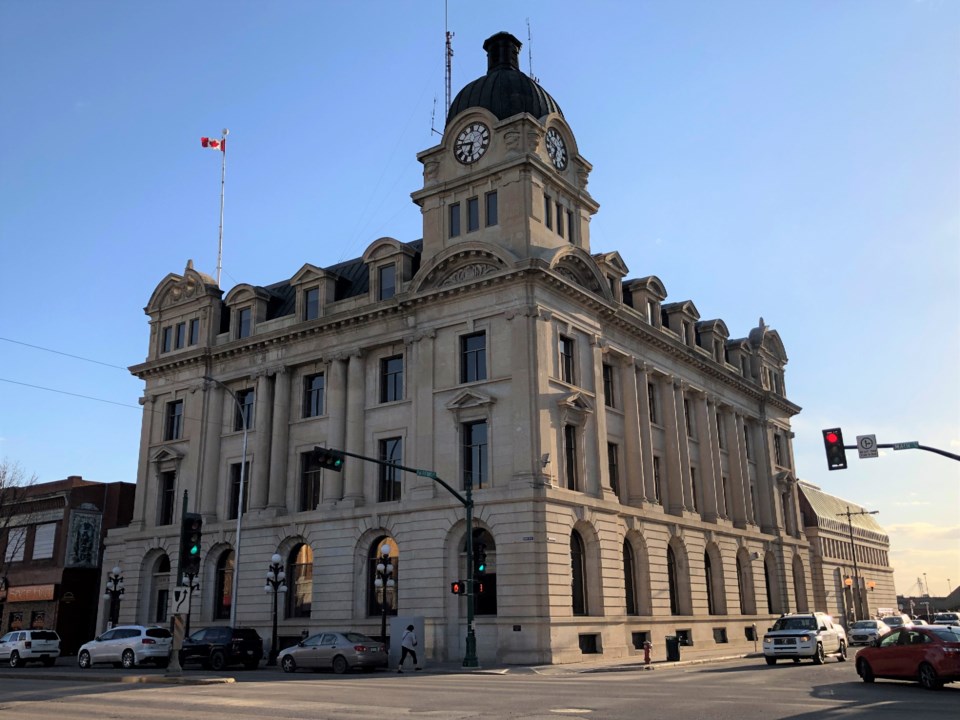The spring thaw has turned Moose Jaw’s streets into a hazardous minefield for motorists, a problem that city council acknowledges needs to be addressed with more capital funding.
Coun. Dawn Luhning raised the issue of the city’s perennial pothole problem during the April 10 regular meeting, during a discussion about the municipality’s strategic plan.
Council voted 6-1 to accept that report, with Luhning opposed.
‘Game of frogger’
She wondered what city administration’s plan was to address the situation once the snow and water had evaporated, considering every year the community’s roads turned into “pothole heaven.”
“I honestly don’t know if I want to hear (the answer of), ‘Well, it’s just where we live and it’s just what we have to deal with.’ But honestly, I’m not sure if I’ve ever seen the roads as bad as they are this year … ,” Luhning said.
“It’s a little bit of a game of frogger to drive around the streets,” she chuckled. “We’ve got to come up with some ways as council in the next budget to attack these problems a little bit better.”
While everything in the strategic plan update is great, Luhning thought residents were more interested in hearing how city hall would fix streets and address the detrimental spring thaw.
Temporary repairs
Moose Jaw is not the only city dealing with this problem, considering it is a climate issue, said Darrin Stephanson, director of public works and utilities. Some roads have deteriorated more than others, while using hot mix asphalt — available in early May — to fill potholes is not permanent.
“Once those road structures start coming apart, we’re putting more and more pothole repairs in. (So), the road needs to be replaced,” he continued. “There’s only so much the public works department can do to keep those roads driveable at that point.”
Some roads like Coteau Street West need full rehabilitation, Stephanson said. However, the replacement of cast iron and feeder water mains along those stretches must first occur.
Given the number of potholes that have increased season over season, Stephanson believed the municipality was falling behind on funding roadway renewal at a reasonable pace.
“We need to own some of that decision … ,” he added.
Installing large patches
The public works department will send out several teams to fill potholes once hot mix asphalt is available. It will also flag areas with multiple potholes so it can shave those locations and install larger patches to hold until the roads are resurfaced.
The department is using cold mix to fill some potholes, but the water washes out that material, Stephanson said. Staff have brought in other material that’s better but not as good as hot mix.
“But again, it’s all temporary and until we get through the thaw … we’re just back to locations multiple times. That’s the unfortunate reality,” he added.
More capital money needed
Luhning acknowledged that council had not provided city administration with enough funding to perform the necessary work to keep roads driveable.
“… I think the spring thaw is showing us that we need to put a little bit more focus on this part of our city because driving the roadways hits everybody’s day-to-day,” she added.
Council provides enough funding for the operational, day-to-day budgets, allowing the department to make regular annual repairs to roads, but it’s the capital — project-focused — budget that needs more money, said Stephanson. Operational funding maintains infrastructure and ensures roads last 20 years, but operational funding cannot handle road renewal.
Transportation needs
City hall has put more focus on renewing the Thunderbird (Fourth Avenue) Viaduct bridge and ensuring that replacement happens, said Bevan Harlton, director of engineering, who noted that the five-year transportation budget contains roughly $45 million.
However, as that project expands and city hall fails to resolve issues with Canadian Pacific Rail (CPR), the municipality puts more of that transportation funding into the bridge project, he continued.
In 2023, the engineering department reduced road repair funding from $18 million to $13 million even though it admits that infrastructure needs work, Harlton said.
The department is also limiting the work it performs on some roads until the underground infrastructure can be replaced, which is good engineering and sound fiscal management, he added.
Business relationship
When asked whether it was advantageous for city hall to have its own hot mix plant, Stephanson said no. He explained that the city has a great relationship with a local contractor who provides suitable quantities.
While having an in-house plant could extend the repair season, it would be a “pretty expensive proposition” to have such a venue for the little work the city can do, he continued. The equipment is expensive, which is why the local contractor has numerous customers to pay for that gear.
The public works department is investigating whether it could purchase machinery to make permanent road repairs in the winter, but it needs to develop a business case before it comes to council with a purchase request, Stephanson added.
The next regular council meeting is Monday, April 24.




